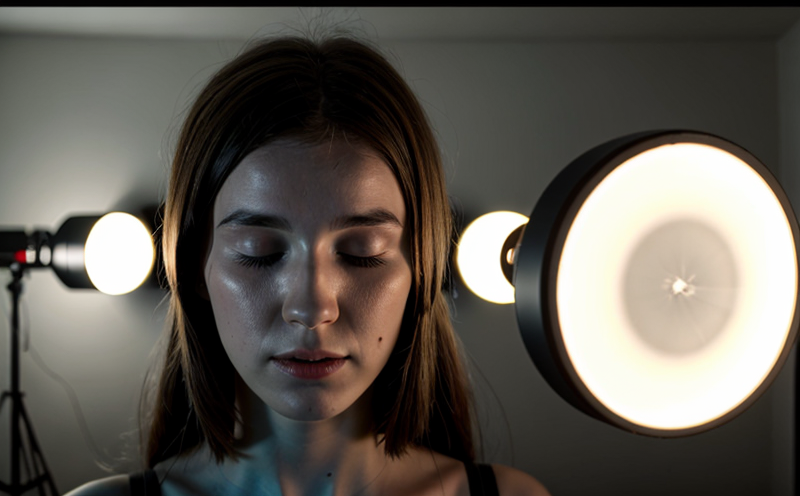UL 1993 Flicker and Stroboscopic Testing of Self Ballasted Lamps
The UL 1993 standard addresses the evaluation of flicker and stroboscopic effects associated with self-ballasted lamps. This testing is crucial for ensuring that lighting fixtures do not produce undesirable visual disturbances that could affect human comfort, productivity, or safety.
Flicker occurs when a light source's intensity varies over time in a manner that can be perceived by the human eye. Stroboscopic effects, on the other hand, occur when the frequency of a light source is close to the rate at which an object is moving, causing the object to appear as if it is frozen or moving backwards and forwards. These phenomena are particularly significant in environments where high-frequency operation can lead to discomfort, visual strain, and even potential safety hazards.
UL 1993 testing involves several stages that ensure compliance with both the standard's requirements and industry best practices. The first step is to prepare the specimen according to specific guidelines outlined in the standard. This includes ensuring that the lamp is properly mounted and that all connections are secure. The specimen must then undergo a series of tests designed to simulate real-world usage conditions.
The testing apparatus used for this process typically consists of specialized equipment capable of generating controlled light sources with varying frequencies. These devices allow technicians to measure both the flicker frequency and the stroboscopic effect accurately. Once these measurements are taken, they must be analyzed against set acceptance criteria established by UL 1993.
The results from this testing provide valuable insights into how well a given lamp or lighting fixture meets industry standards for minimizing unwanted visual effects. By adhering to strict protocols and using accurate measurement tools, laboratories like Eurolab can ensure consistent and reliable test outcomes.
Compliance with UL 1993 is important not only because it helps protect consumers from potentially harmful effects but also because it enhances the overall quality of lighting products available on the market. For manufacturers looking to meet these standards, conducting thorough flicker and stroboscopic testing early in the design process can help identify potential issues before they become costly problems later down the line.
Moreover, compliance with this standard demonstrates a commitment to producing high-quality products that contribute positively to public health and safety. In an era where energy efficiency is increasingly emphasized, ensuring that lighting fixtures perform consistently across different environments becomes even more critical.
In summary, UL 1993 flicker and stroboscopic testing plays a vital role in safeguarding user comfort while promoting safer and more efficient lighting solutions. By leveraging advanced technology and rigorous methodology, laboratories can provide comprehensive evaluations that meet or exceed regulatory expectations.
Applied Standards
The UL 1993 standard is widely recognized for its stringent requirements regarding flicker and stroboscopic effects in self-ballasted lamps. It draws upon various international standards such as IEC 60754-1 and EN 13038, which focus on similar aspects of light source performance.
- IEC 60754-1: This part specifies the method for measuring and evaluating the flicker characteristics of lighting installations. It provides guidelines for testing both steady-state and transient conditions.
- EN 13038: This European standard deals with the measurement of stroboscopic effects in lighting systems, providing detailed procedures for laboratory testing.
By integrating these standards into their testing protocols, laboratories ensure they are adhering to best practices recognized globally. This approach not only enhances credibility but also supports continuous improvement efforts within the industry.
Eurolab Advantages
At Eurolab, we pride ourselves on delivering unparalleled expertise in lighting testing, including UL 1993 flicker and stroboscopic testing. Our state-of-the-art facilities are equipped with cutting-edge technology that allows us to conduct thorough assessments of even the most complex specimens.
- Accurate Measurement: Utilizing precise instruments capable of detecting minute variations in light output, our team ensures every measurement is accurate and reliable.
- Comprehensive Analysis: With years of experience interpreting test results against relevant standards, we offer deep insights into how your products perform.
- Industry Leadership: As a leader in the field, Eurolab stays at the forefront of technological advancements, ensuring our services remain relevant and effective.
- Rapid Turnaround: Our efficient processes mean you can expect quick results without compromising on quality.
We understand that compliance with UL 1993 is just one aspect of bringing high-quality lighting products to market. That's why we go beyond mere testing; our experts are here to guide you through every stage, from initial concept development to final certification.





